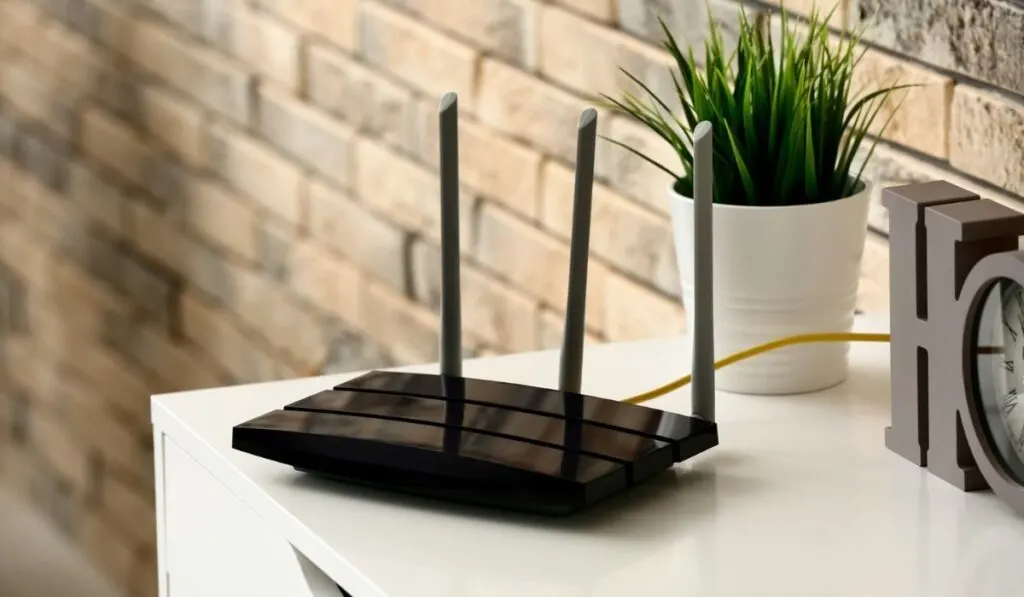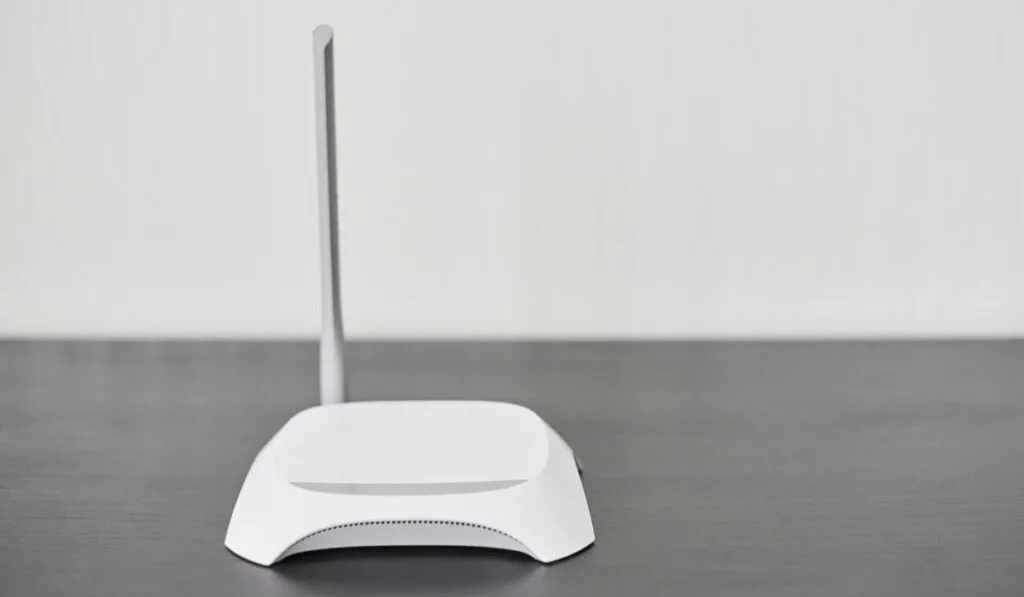You’ve must’ve seen those memes asking, “What do you choose? Two days off work, or a thousand dollars and two days without WiFi?” Well, if you live your life online like us, you’d never take the money.
WiFi can go through walls because of how long its radio wavelengths are. They’ll lose a bit of strength, but they’ll still be strong enough to use. However, 2.4 GHz WiFi is much better than 5 GHz WiFi at going through walls because it has much longer wavelengths.
WiFi made its debut in the late ’90s, and today we talk through it, shop through it, and even date through it. So, you may have questions about the technology behind WiFi and how it works. We’ve put together this short guide for understanding the basics of wireless signals.
How Does WiFi Work Through Walls?

Yes, WiFi signals do pass through walls. But before we fully answer that question, we need to understand how WiFi works in general.
WiFi is based on electromagnetic radiation. And don’t worry, although the term sounds awfully dangerous, this form of electromagnetic radiation isn’t harmful. You won’t start to glow in the dark out of nowhere.
In fact, visible light, infrared light from cameras, and microwaves are all forms of electromagnetic radiation. WiFi utilizes a very low frequency of electromagnetic radiation that falls within the range of radio waves, a term used to describe frequencies between 3kHz and 300 GHz (source). WiFi works on two frequencies: 2.4GHz and 5GHz.
If you picture WiFi signals, billions of such waves are emitted from your router each second. These waves spread around the router. Then, your device’s antenna receives the waves, processes them, and sends data back to the router.
Now, what if there are solid objects like walls around? Will the WiFi signals still go through?
Yes. WiFi signals should pass through walls just fine, and that’s because radio waves have very long wavelengths. These signals penetrate objects such as walls and furniture, lose a bit of energy, and easily emerge on the other side. You could say that walls are as transparent to radio waves as glass is to visible light.
But this slight loss of energy makes WiFi susceptible to attenuation, which means that it weakens as it travels farther through the air or goes through solid objects. So each wall that the signal passes through reduces its power, and if you have too many thick walls around, your WiFi signal might be weak.
Which Building Materials Slow Down WiFi Signals?
Certain materials affect WiFi signals more than others. This is because these materials have a high density and absorb electromagnetic waves.
Here are a few examples:
- Concrete is the worst offender when it comes to slowing down WiFi signals. Reinforced concrete is embedded with iron rods which further block radio waves.
- Brick and masonry walls are not as dense as concrete but also absorb a significant amount of radio waves.
- A simple glass window might not block your WiFi, but double-paned insulating windows are almost as bad as brick walls.
- Metal in your windows, ceiling, or walls can also block WiFi signals.
- Wood and sheetrock walls are not so dense so they won’t affect WiFi much, but they can still cause minor signal loss.
Remember that thickness also affects the WiFi signals. A thick concrete wall will block a lot more than a single layer of brick and sheetrock.
Which WiFi-Band Goes Through Walls Better?
The radio wave is a broad term used to explain a range of electromagnetic waves. WiFi technology only uses a small portion of the radio wave spectrum, the 2.4 GHz and 5 GHz frequencies.
The 2.4 GHz band means the router sends 2.4 billion signals each second. These signals have a larger wavelength, so even if they go through many walls, at least some will reach the connected device. As a result, 2.4 GHz provides extensive area coverage.
In a 5 GHz band, the router sends out 5 billion signals each second, giving it an advantage in speed and bandwidth. However, to accommodate the higher number, the wavelength of each signal is reduced, which means they lose more energy when passing through walls and can’t reach your devices if they’re at the other end of a building.
So, the 2.4 GHz band is always preferred when there are a lot of walls in the area. For example, offices and hospitals use the 2.4GHz band because the signals go through multiple walls. 5 GHz is better when it comes to pure speed and bandwidth.
However, the placement of the router also plays an important role. At the right spot, both bands will give the best performance.
Best Mesh WiFi Systems for Thick Walls

Just because you have many walls around doesn’t mean you can’t enjoy a stable WiFi connection. When it comes to covering dead zones and getting a strong signal all over the house, mesh WiFi systems are the way to go.
WiFi mesh uses your main router and several access devices strategically placed around your house. These smaller access points called ‘Nodes’ make a network that amplifies the signal from the parent router and then broadcasts it as a stronger signal to connected devices.
As a result, if you have thick walls, the nodes will compensate for the lost signal, and you’ll always enjoy stable WiFi.
Recommended Mesh WiFi Systems
Mesh WiFi systems are easy to set up and are perfect for large or multi-level homes. Below we have listed the best WiFi mesh systems for 2022.
Google WiFi AC1200 Mesh WiFi System (on Amazon)
With these sleekly designed packs, Google WiFi is one of the best mesh WiFi systems for the home. You’ll be able to cover 4500 sq feet with this pack and have that no buffering experience in every corner.
It also has parental control and device restriction features, so you can also schedule your kids’ internet time.
NETGEAR Orbi Whole Home Tri-band Mesh WiFi (on Amazon)
Equipped with the WiFi 6 technology and Netgear armor cybersecurity, Orbi WiFi will keep your devices safe and secure.
In addition, it has a 1.4 GHz powerful processor and promises 4.2 Gbps speed over WiFi. With the availability for 100 devices, you’ll get the best performance no matter how many devices you have in your home.
Amazon Eero Mesh WiFi System (on Amazon)
Another high-performance mesh WiFi system, Amazon eero, is one of the best WiFi mesh systems available in the market. With dual-band WiFi support and powerful processing, Amazon eero delivers powerful speed.
It also has tight security encryptions and works with Alexa to automate your WiFi around the house.
Meshforce M7 Tri-Band Mesh WiFi System (on Amazon)
Each pack covers up to 2000 square feet; Meshforce M7 is one of the most powerful mesh WiFi systems on the market. It’s compatible with both 2.4 GHz and 5 GHz and uses high-power amplifiers for more robust output, essential if you have thick walls.
It also comes with the ‘My Mesh’ app guide to easily set up and manage the system from a mobile device.
If you have lots of thick walls around and your WiFi cannot reach your iPhone 10 on the other side of the home. Mesh WiFi is the solution to your issues.
